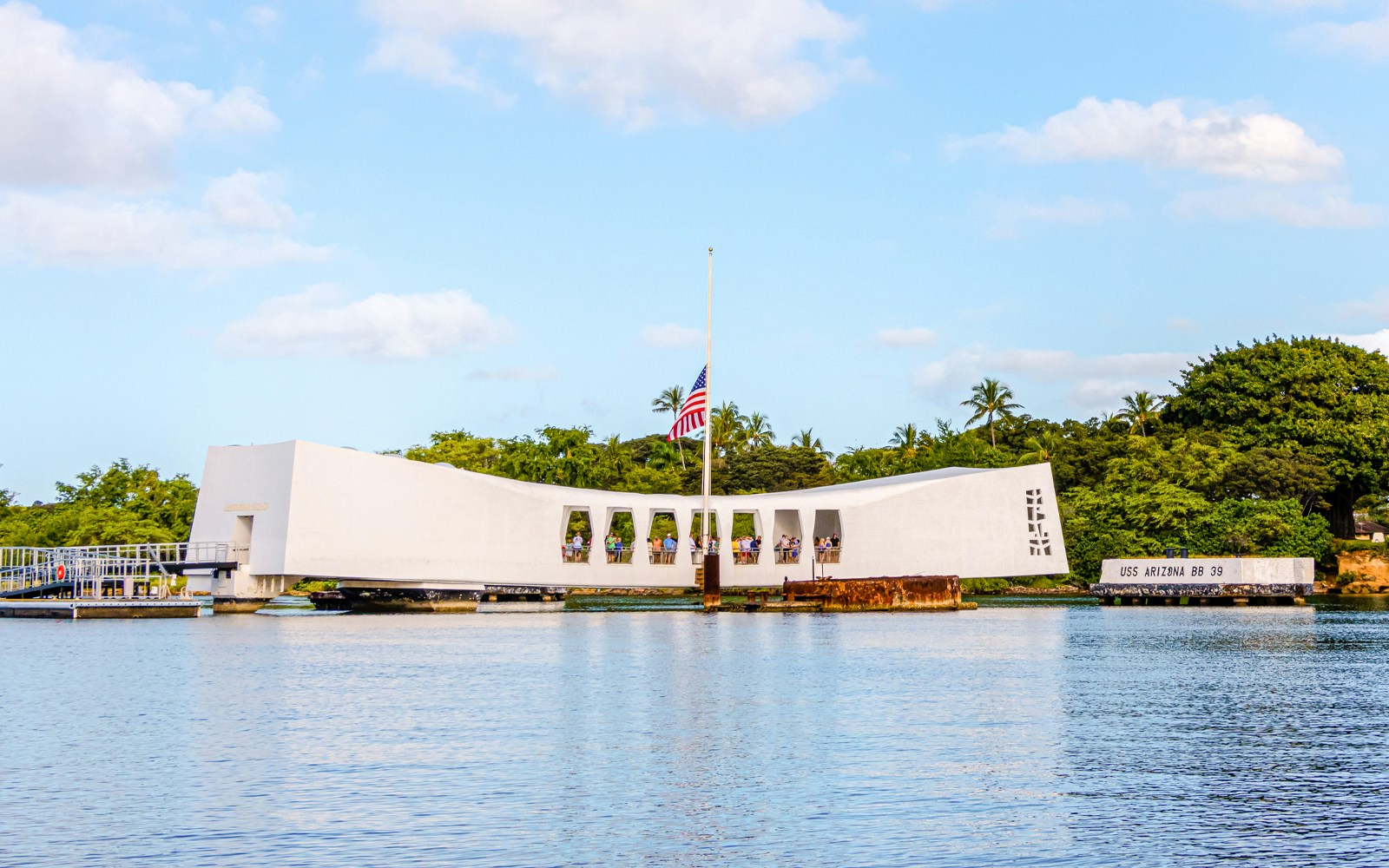Walk through history: Explore exhibits and galleries that bring the events of December 7, 1941, to life with rare artifacts, multimedia displays, and moving personal accounts.
Your complete guide to the Pearl Harbor Visitor Center
What is the Pearl Harbor Visitor Center

The Pearl Harbor Visitor Center in Oʻahu, Hawaii, is the gateway to the Pearl Harbor National Memorial and a must-visit highlight for history and culture seekers. Managed by the National Park Service, it offers powerful exhibits like Road to War and Attack and Aftermath, a 23-minute documentary in the memorial theater, outdoor remembrance areas, and access to the USS Arizona Memorial via a Navy boat shuttle.
You can also explore add-ons like the Bowfin Submarine, VR experiences, and multimedia tours. With its mix of artifacts, personal stories, and immersive displays, the center provides a moving, educational, and reflective experience that honors the events of December 7, 1941, making it both a solemn tribute and a deeply engaging attraction.
Why you should visit the Pearl Harbor Visitor Center
Highlights to catch at the Pearl Harbor Visitor Center

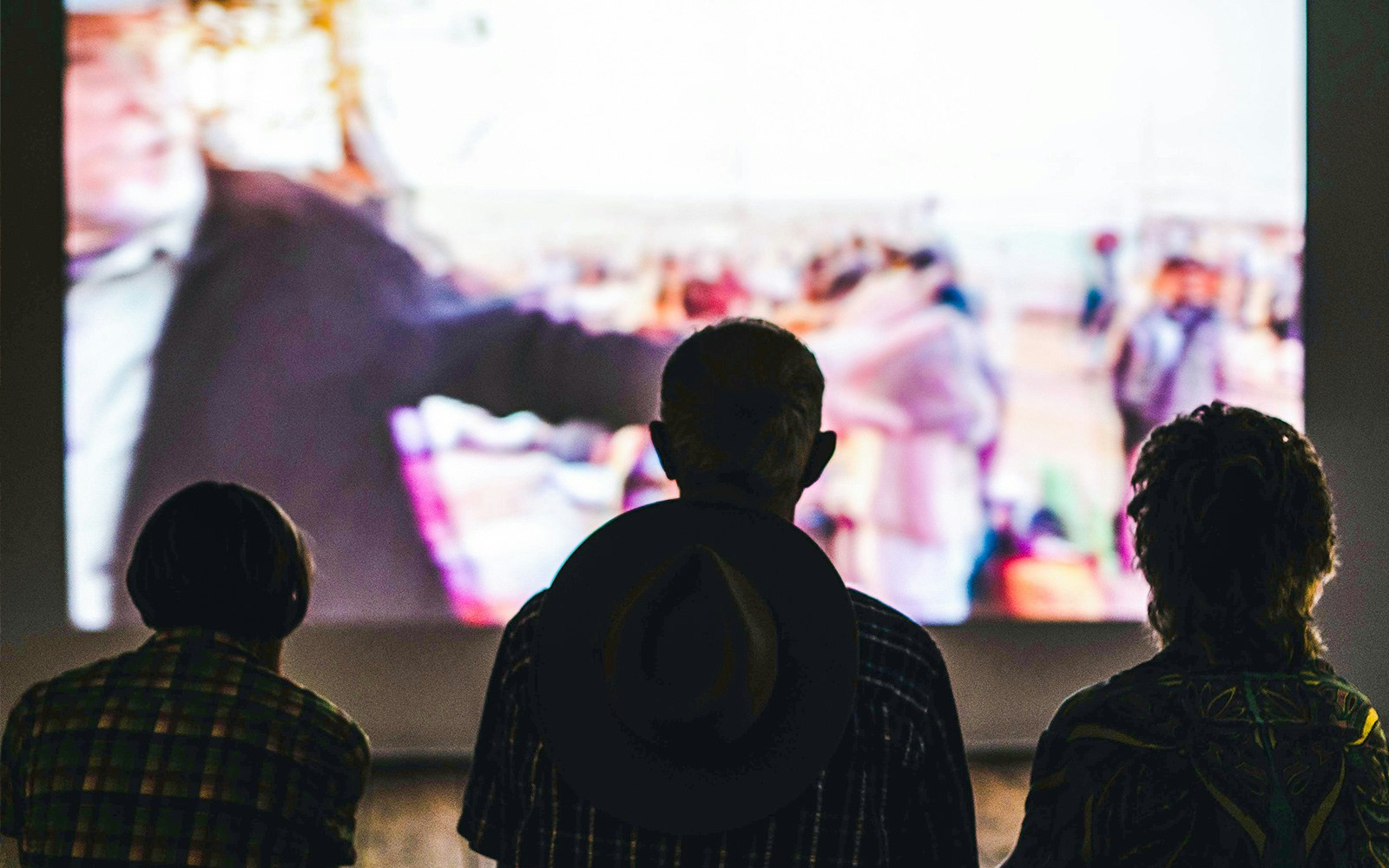
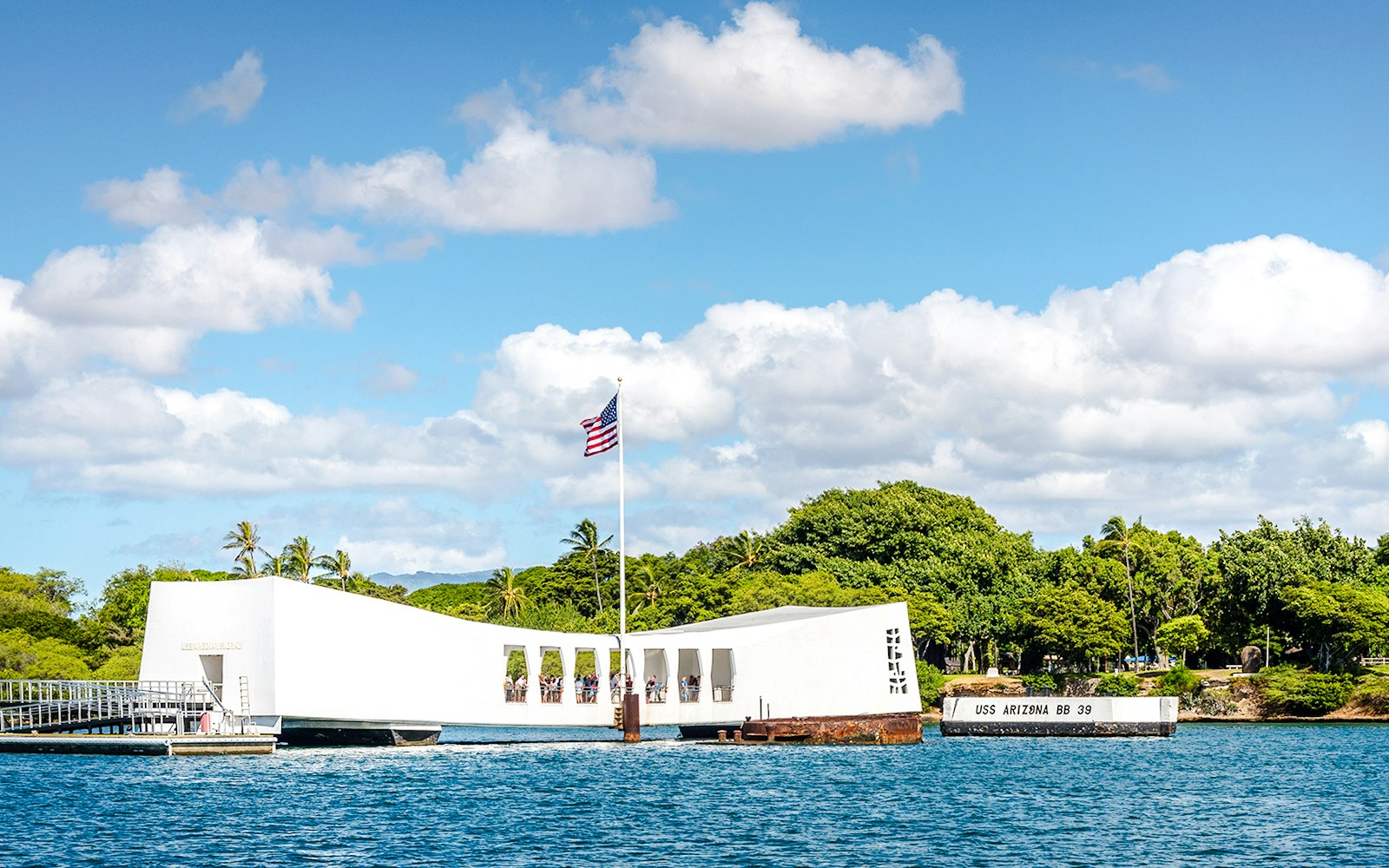


Why was the Pearl Harbor Visitor Complex established?
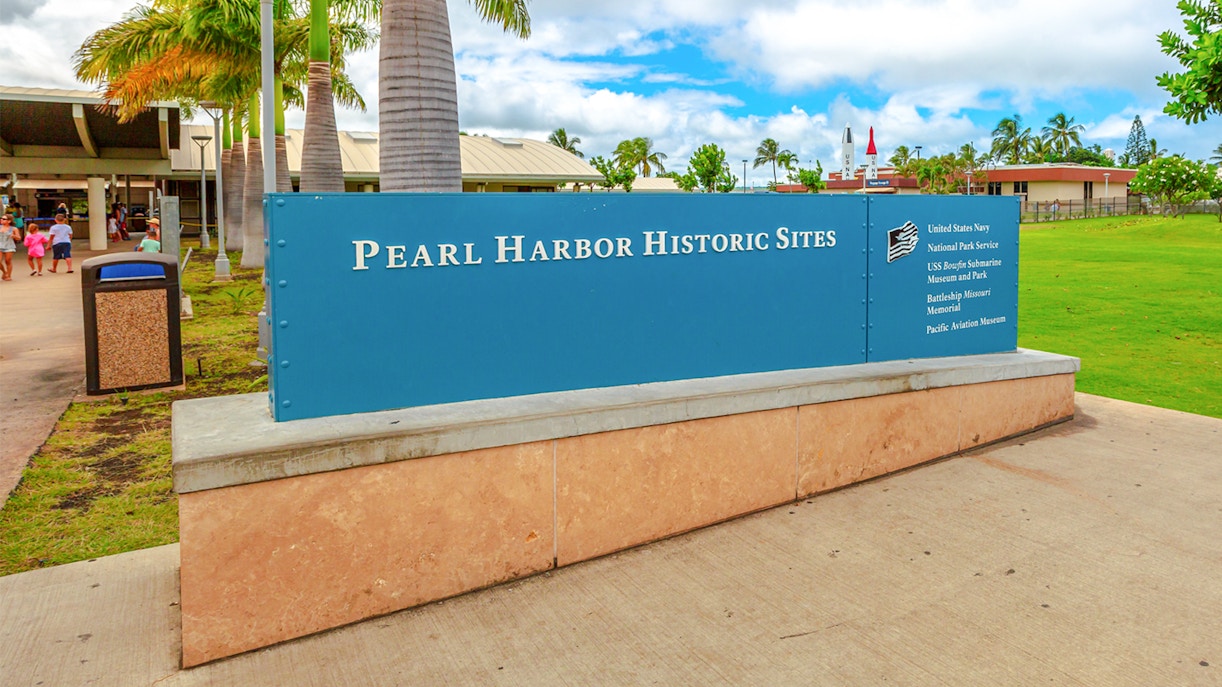
The Pearl Harbor Visitor Center was created to honor those who perished in the attack of December 7, 1941, and to help future generations grasp its importance. As the gateway to the Pearl Harbor National Memorial, it invites visitors to step into history through exhibits, survivor stories, and memorial spaces that commemorate one of America’s most defining moments.
More than a place of remembrance, the center also safeguards artifacts, oral histories, and cultural treasures from World War II in the Pacific. Since opening in 1980, and with a major renovation in 2010, it has grown into a modern hub with museums, theaters, and outdoor exhibits, while also serving as the starting point for visits to the USS Arizona Memorial and nearby historic sites.
Know before you go

- Timings: Daily from 7am to 5pm
- Closed on: Thanksgiving, Christmas Day, and New Year’s Day
- Duration of your visit: Plan to spend at least 2–3 hours to see the Visitor Center exhibits. If you’d like to explore all four Pearl Harbor Historic Sites, set aside a full day (6–8 hours).
- Best time to visit: Arrive early in the morning (around opening time) to avoid large crowds. The months of April, May, September, and October tend to be less crowded, offering a more relaxed experience.
Address: Pearl Harbor Visitor Center, 1 Arizona Memorial Place, Honolulu, HI 96818, USA | Find on Maps
- Nearby landmark: USS Arizona Memorial Ferry (2.3 miles)
- Closest bus stop: Arizona Memorial (approx. 2–3 minute walk)
- Closest train station: Hālawa / Aloha Stadium Station (Skyline) | (10–12 minute walk)

- At the information desk, Staff and volunteers are available to answer questions, provide maps, and guide you to exhibits or memorial programs.
- Clean and well-maintained restrooms are located throughout the Visitor Center.
- Snack bars and concession stands offer light meals, drinks, and Hawaiian treats; picnic areas are also available.
- Multiple gift shops sell books, apparel, souvenirs, and memorabilia, including items supporting the memorial’s preservation.
- Since bags aren’t allowed, a staffed storage facility is available at the Visitor Center for a small fee.
- Shuttle buses to Ford Island attractions (Battleship Missouri and Aviation Museum) depart directly from here.

- The Visitor Center, museums, restrooms, theaters, and shuttle boats to the USS Arizona Memorial are fully accessible for guests using wheelchairs or scooters.
- In the theaters and outdoor areas, designated seating is available for visitors with mobility challenges.
- The documentary film is fully captioned in English, and induction loop technology is available for hearing aids. Audio guides in multiple languages also support accessibility.
- Braille signage and tactile models throughout the Visitor Center assist visitors with visual impairments in navigating and experiencing the exhibits.
- Benches are placed along walkways and outdoor spaces to help those who may need frequent breaks while touring.
- Accessible parking spaces are conveniently located near the entrance, providing easy access to drop-off areas upon arrival.
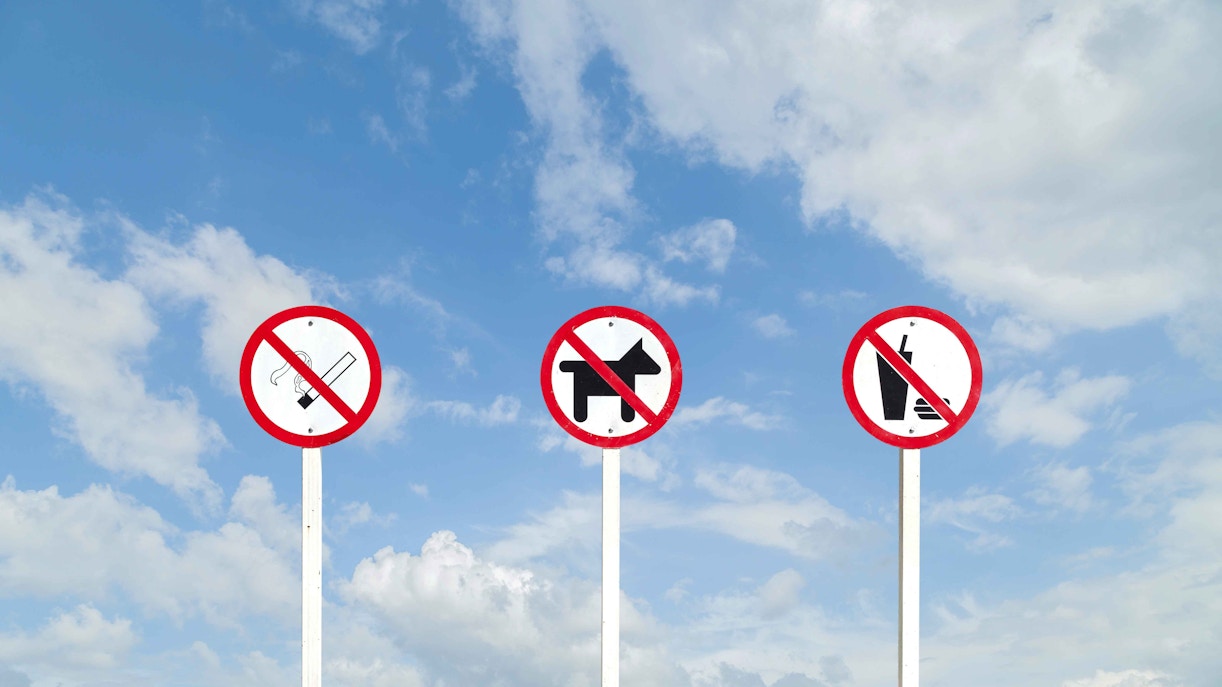
- Bags that provide concealment (backpacks, purses, camera bags, diaper bags, etc.) are not permitted. Only clear stadium-style bags or small clutches (hand-carried) may be allowed. A secure bag storage facility is available for a small fee near the entrance.
- No outside food or beverages are allowed inside the museums and memorials. Only bottled water is permitted. A snack shop and food options are available on-site.
- All visitors are subject to screening by the National Park Service. Expect metal detectors and bag checks for approved items.
- Smoking, vaping, alcohol, drugs, and any form of intoxication are strictly prohibited on the premises.
- Pets are not allowed, except for registered service animals.
- Photography is allowed in most areas, but tripods, monopods, and selfie sticks may be restricted in certain locations.
- Military visitors in uniform must wear Class B or better to enter the memorial; battle dress uniform (BDUs) are not permitted on the USS Arizona Memorial.
- Large luggage, strollers (inside certain memorials), weapons, fireworks, and hazardous materials are not permitted.

- Pearl Harbor Bookstore (Pacific Historic Parks Bookstore)
- The main retail shop at the Visitor Center offers books, DVDs, apparel, jewelry, educational materials, and unique souvenirs related to Pearl Harbor and World War II. Proceeds support the memorial and preservation efforts.
- Timings: 7am – 5pm
- Location: Near the main entrance/exit | Find on Maps
Frequently asked questions about the Pearl Harbor Visitor Center
Plan for at least 2 hours if you’re only exploring the exhibits and the USS Arizona program. However, most visitors spend 4–5 hours, especially if they add nearby sites like the USS Bowfin or Battleship Missouri.
Yes. The entire facility, including the theaters, exhibits, and Navy boats to the USS Arizona Memorial, is wheelchair accessible. Strollers are allowed in most areas, though they may need to be parked outside the theater.
Mornings are the best time, as winds on the harbor are calmer and crowds are lighter. Afternoon visits may face weather-related delays for the Navy boats. Weekdays are generally less crowded than weekends or holidays.
Outside food is not permitted, but a snack shop is available at the Visitor Center. You may bring water bottles, and refill stations are available throughout the grounds.
No, entry is free. Tickets are only needed for sites like the USS Arizona Memorial, Battleship Missouri, Bowfin Submarine, and Aviation Museum.
Exhibit galleries, a remembrance circle, documentary film, bookstore, and departure points for shuttles and boats to other attractions.
Opened in 1980, with a major renovation completed in 2010.
Yes, it offers rich historical context, moving exhibits, and serves as the gateway to all Pearl Harbor sites.
More reads
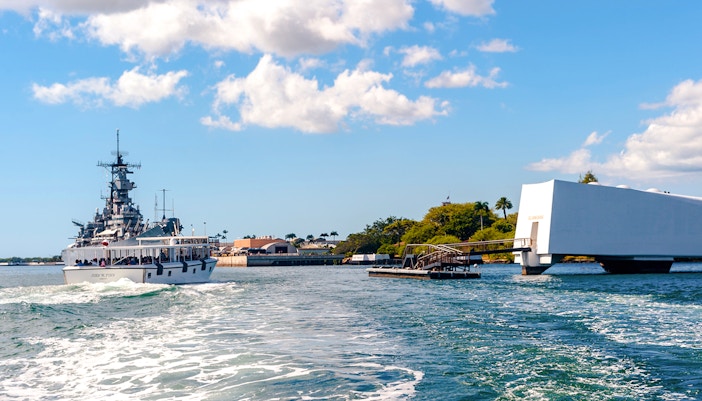
USS Arizona

Battleship Missouri



